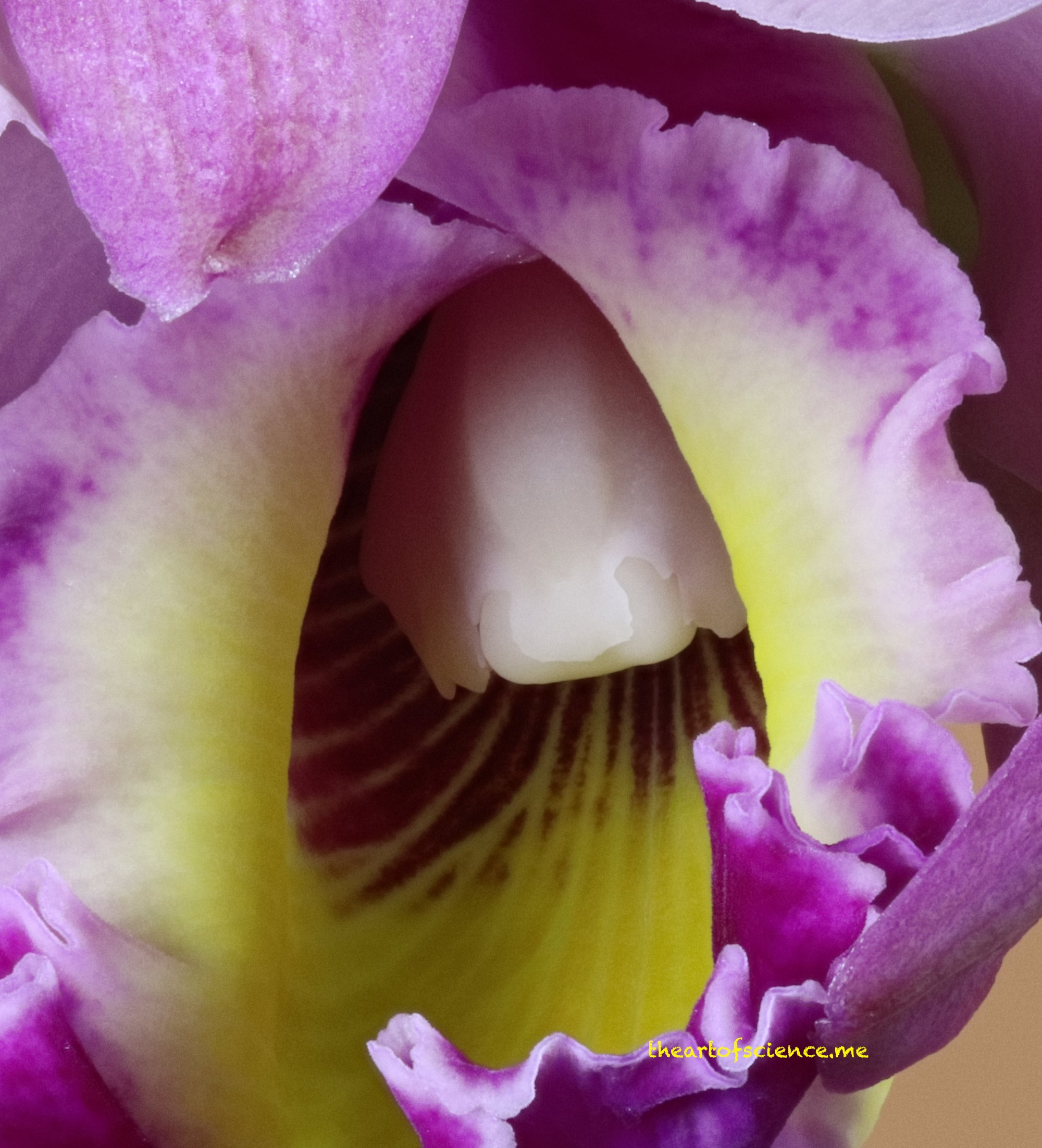Cattleya Deconstructed.
Elegant grace, fashioned with the finest materials extracted from moist wood bark and fresh air.
Smooth curves, rich colour.
The tower, a feature of these plants, slowly emerges. It lies flat against the lip rather than standing erect.
Form follows function in architecture, however, aesthetics catch the eye. The lower petal evolved over millions of years to provide a hi-viz bee landing pad.
Beauty lies in the eye of the beeholder. Attracted to the Cattleya flower by its stunning appearance bees face crushing disappointment. They buzz in frustration as they fly off.
Exquisite design but its all show for the bees.
Bees know where to find nectar when they approach flowers. Steadying themselves on the swaying plant they spot where to insert their proboscis for a load of nectar. The connector lies at the rear of the flower tube under the tower, through a narrow gap.
Bees can’t fit through the space without pushing the whole structure up. In doing so they leave pollen from an earlier encounter of the floral kind on the stigmatic surface overhead. The bee has successfully pollinated the orchid.
Bees have two complaints at this point.
It’s a very tight squeeze inside the flower tube.
This plant doesn’t produce nectar. All work with no pay.
Removing petals to give a clearer view the reproductive equipment.
A smooth curved casing houses the reproductive organs. While petals are delicate this tower is a solid build.
A stylish peaked cap covers two pollinia, small sticky balls of pollen. I wanted to show this but both pollinia tipped out and I accidentally stood on them. Bees knock this cap off as they reverse out of the flower.
A section through the tower.
The bee crawls into the space beneath the tower. It manoeuvres to the rear of the flower tube and sticks its proboscis into the cuniculus hoping to extract a nectar reward. I think the cuniculus is the tube visible in section.
Pollen sticking to the hairs on the bee’s middle section, the thorax, is transferred to the stigmatic surface while the insect bangs about in the confined space. The stigmatic surface is the shiny moist-looking area.
Frustrated by the absence of nectar the bee reverses out of the tight space. In doing so it knocks the cap off the pollinium and collects a pair of pollen balls. It wears them like earmuffs as it flies to the next flower.
Repeat.









